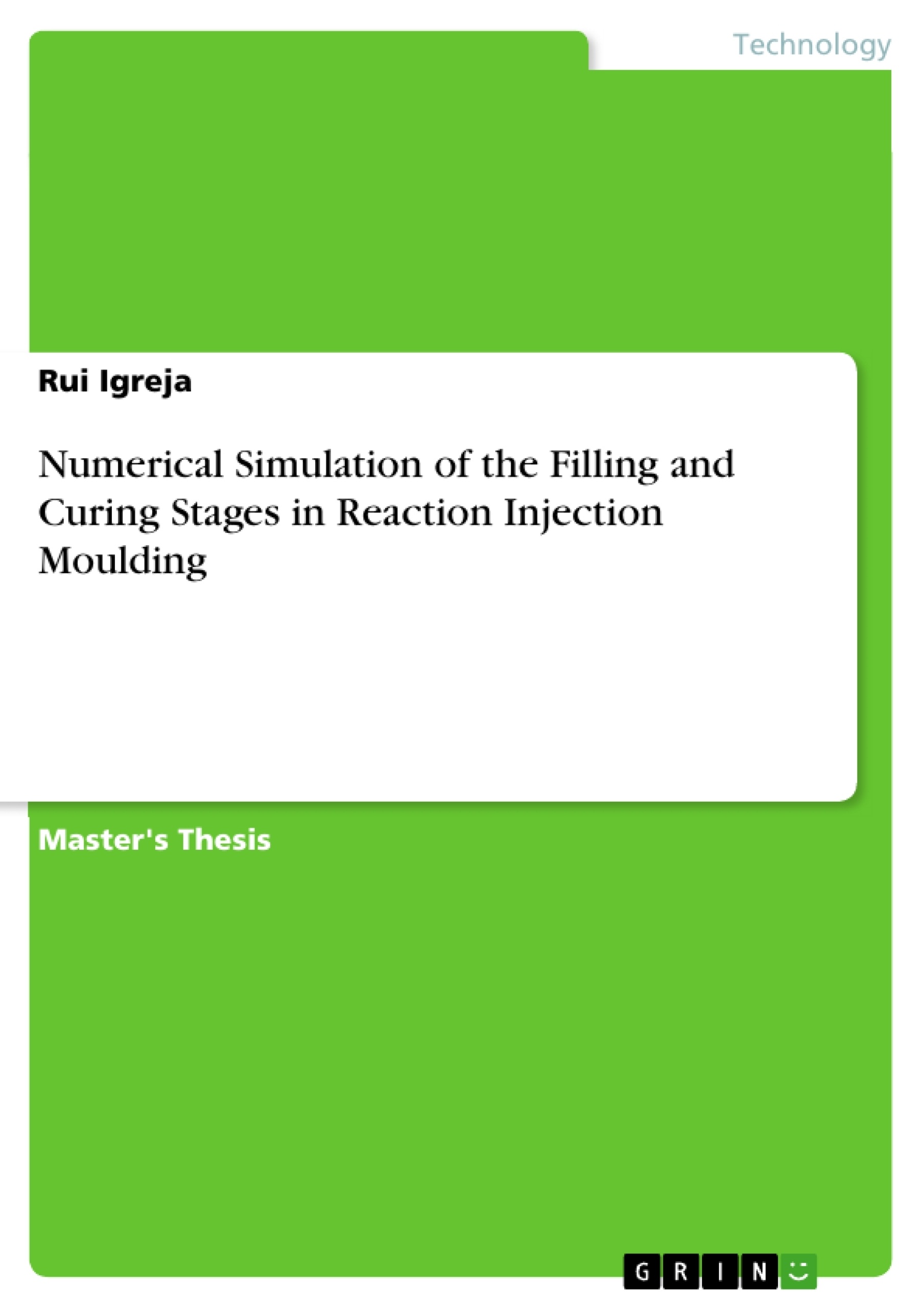(Thesis in pdf available here: http://goo.gl/EZzlT6 and here: http://hdl.handle.net/10773/2419)
Commonly used methods for injection moulding simulation involve a considerable number of simplifications, leading to a significant reduction of the computational effort but, in some cases also to limitations. In this work, Reaction Injection Moulding (RIM) simulations are performed with a minimum of simplifications, by using the general purpose CFD software package Ansys CFX, designed for numerical simulation of fluid flow and heat and mass transfer.
The Ansys CFX's homogeneous multiphase flow model, which is generally considered to be the appropriate choice for modelling free surface flows where the phases are completely stratified and the interface is well defined, is shown to be unable to model the filling process correctly. This problem is overcome through the implementation of the inhomogeneous model in combination with the free-slip boundary condition for the air phase.
The cure reaction is implemented in the code as a transport equation for an additional scalar variable, with a source term. Various transient and advection schemes are tested to determine which ones produce the most accurate results.
Finally, the mass conservation, momentum, cure and energy equations are implemented all together to simulate the simultaneous filling and curing processes present in the RIM process. The obtained numerical results show a good global accuracy when compared with other available numerical and experimental results, though considerably long computation times are required to perform the simulations.
Frequently asked questions
What is the main topic of this document?
The document focuses on the numerical simulation of the filling and curing stages in Reaction Injection Moulding (RIM), using CFX (now ANSYS CFX) software. It includes analyses of the filling process using both homogeneous and inhomogeneous models, simulation of the curing process, and a combined simulation of filling and curing.
What is Reaction Injection Moulding (RIM)?
RIM is a process for rapid production of complex parts through the mixing and chemical reaction of two or more components, typically isocyanate and polyol. The liquid components are injected into a mixing chamber and then flow into a mold cavity where they polymerize and cure.
What are the key differences between Thermoplastics Injection Moulding (TIM) and Reaction Injection Moulding (RIM)?
TIM involves injecting hot polymer melt into a cold cavity where it solidifies by cooling. RIM involves injecting liquid components into a mold where they undergo chemical reaction (curing) to form a solid part. TIM uses thermoplastics, which can be re-melted, while RIM uses thermosets, which undergo an irreversible chemical reaction.
What is the homogeneous model used for in the document?
The homogeneous model assumes that both phases (resin and air) in the filling process share a single velocity field. It's typically used for modeling free surface flows where phases are completely stratified.
What are the limitations of using the homogeneous model for RIM simulation, according to the document?
The document finds that the homogeneous model, with the usual no-slip boundary condition, is unable to model the filling process correctly, leading to an incorrect interface that doesn't touch the walls.
What is the inhomogeneous model and how does it address the limitations of the homogeneous model?
The inhomogeneous model uses separate flow fields for each phase (resin and air) and accounts for interphase momentum transfer. It overcomes the limitations of the homogeneous model by implementing a free-slip boundary condition for the air phase at the walls, allowing for a more accurate representation of the filling process.
How is the cure reaction implemented in the numerical simulations?
The cure reaction is implemented as a transport equation for an additional scalar variable representing the degree of cure, with a source term representing the rate of cure. Various transient and advection schemes are tested for accuracy.
What are the key findings related to the energy equation in the context of RIM simulation?
The viscous dissipation term can often be neglected compared to the heat generated by the cure reaction. A high temperature gradient can be observed on the mould walls when the flow front arrives.
What is the significance of the Courant number (Cr) in the simulations?
The Courant number is related to numerical stability. The advection scheme chosen for the volume fraction equation automatically allows high Courant numbers locally with boundedness principles to keep the interface sharp.
What are the key software and numerical methods used in this work?
The simulations are performed using the commercial CFD software package ANSYS CFX. Numerical methods include the finite volume method (FVM), different transient and advection schemes, and various two-phase flow models.
What are key themes explored in this document based on the table of contents?
Key themes explore the filling process in the RIM, including using the homogenous and inhomogenous model. There is a key focus on the curing process and simulation of the RIM filling and curing stages.
- Quote paper
- Rui Igreja (Author), 2007, Numerical Simulation of the Filling and Curing Stages in Reaction Injection Moulding, Munich, GRIN Verlag, https://www.grin.com/document/273166




